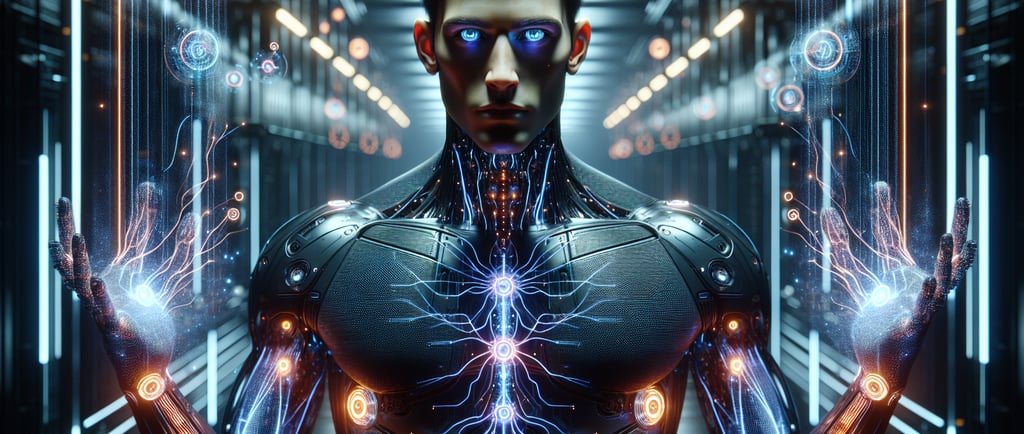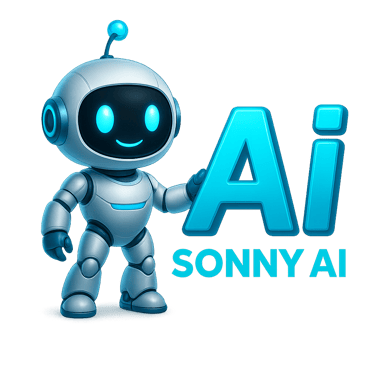The Transformative Impact of AI Automation
Explore how AI tools enhance programming productivity without replacing jobs, and learn strategies for developers to adapt and grow with AI.
7/24/20255 min read


The Transformative Impact of Ai Automation
AI Automation combines artificial intelligence with automation to create intelligent systems capable of learning, adapting, and improving operations across industries. Unlike traditional automation, AI Automation uses technologies such as machine learning, robotic process automation, and natural language processing to handle complex and dynamic tasks with greater accuracy and efficiency.
This article explores how AI Automation is revolutionizing sectors like manufacturing, healthcare, finance, and customer service by enhancing productivity, reducing costs, and improving decision-making.
Understanding its applications, economic impact, and implementation challenges is essential for businesses aiming to leverage AI Automation for competitive advantage and innovation.
Artificial Intelligence (AI) and Automation are transformative technologies reshaping how businesses and industries operate. To understand AI Automation, it is essential to first define these components separately.
AI refers to systems or machines that mimic human intelligence processes, such as learning, reasoning, problem-solving, and understanding natural language. It enables computers to analyze data, identify patterns, and make decisions with a level of autonomy that was previously impossible.
Automation, on the other hand, involves using technology to perform tasks without human intervention, traditionally focusing on repetitive, rule-based processes that follow set instructions precisely. When combined, these technologies create AI Automation — a sophisticated form of automation that not only executes predefined tasks but also adapts, learns, and improves through experience.
This integration sets AI Automation apart from traditional automation by enabling systems to handle complex, unstructured, and dynamic tasks. Key technologies that power AI Automation include machine learning, which allows systems to improve continuously from data; robotic process automation (RPA), which automates repetitive digital tasks; and natural language processing (NLP), which enables machines to interpret, respond to, or generate human language.
Traditional automation typically relies on static rules, executing pre-programmed workflows without deviation. In contrast, AI Automation incorporates feedback loops and predictive analytics to adjust operations in real-time or anticipate future conditions. For example, while traditional automation might route customer service queries based on keyword matching, AI Automation can understand sentiment and context, providing personalized responses.
This fundamental difference allows AI Automation to unlock new efficiencies, reduce errors, and create more resilient systems that evolve as conditions change. Overall, AI Automation represents a paradigm shift from simple task automation to intelligent process automation, where the system has a degree of cognitive capability. This advancement enables organizations to automate a broader range of operations and deliver enhanced value through increased accuracy, speed, and decision-making intelligence.
AI Automation has found diverse applications across multiple industry sectors, demonstrating its versatility and transformative impact.
In manufacturing, AI Automation is used extensively for predictive maintenance, where machine learning algorithms analyze equipment data to anticipate failures before they occur, reducing downtime and maintenance costs. Additionally, AI-driven quality control systems can inspect products faster and more accurately than human inspectors, ensuring higher standards and consistency along assembly lines.
In healthcare, AI Automation assists in managing vast amounts of patient data to support diagnostics and treatment planning. For example, algorithms analyze imaging data to help detect diseases such as cancer at earlier stages, while administrative automation streamlines appointment scheduling and billing processes to free up healthcare workers' time for patient care.
The finance sector leverages AI Automation for fraud detection, utilizing pattern recognition to identify suspicious transactions in real time, thereby enhancing security. Algorithmic trading platforms apply AI models to execute trades at optimal prices and timings, while customer onboarding processes are sped up using AI-powered identity verification and document processing.
Customer service is another area transformed by AI Automation. Chatbots and virtual assistants powered by natural language processing handle routine inquiries and support requests 24/7, improving response times and allowing human agents to focus on complex issues. Automated ticket routing and resolution further enhance service efficiency.
Supply chain management benefits from AI Automation through improved demand forecasting, inventory optimization, and logistics planning. AI algorithms analyze historical sales data, market trends, and external factors to predict demand accurately, enabling companies to reduce stockouts and overstocking.
Automated warehouse systems and delivery route optimization also lower operational costs and speed up supply chain responsiveness. These sector-specific examples illustrate how AI Automation is not just about replacing manual tasks but augmenting operations to deliver smarter, faster, and more cost-effective outcomes across industries.
Recent data illustrate the accelerating adoption and economic impact of AI Automation across industries. According to Gartner's 2023 report, by 2025, 75% of large enterprises are expected to have implemented at least one AI-driven automation technology, up from 45% in 2021.
Gartner analysts highlight that companies adopting AI Automation have realized an average productivity gain of 20-30%, primarily through reduced manual effort and faster processing times. McKinsey's 2022 global survey found that AI Automation could potentially automate up to 50% of current work activities, translating to an estimated economic impact of $15.7 trillion by 2030 through increased efficiency and innovation.
They emphasize that sectors such as manufacturing, retail, and financial services lead AI Automation investments due to their high-volume transactional and data-intensive operations. Industry expert Dr. Michael Chui from McKinsey has noted, "AI Automation is rapidly shifting from experimental pilots to mainstream deployment, driving substantial business value by augmenting human capabilities and automating complex decision-making processes."
Similarly, Gartner’s VP of Research, Whit Andrews, stated, "AI Automation enables organizations to transform not only operational efficiency but also customer experiences and product innovation." Supporting these insights, a 2023 Deloitte report shows that companies leveraging AI Automation have seen a 40% reduction in operational costs and a 35% improvement in cycle times across various business processes. For example, firms employing AI-powered chatbots report customer service improvements, with resolution times decreasing by up to 50%, enriching customer satisfaction.
These statistics and expert opinions confirm that AI Automation is a major driver of digital transformation, delivering measurable benefits in productivity, cost savings, and business agility, with widespread adoption growth anticipated over the coming years.
Implementing AI Automation, while promising substantial benefits, presents a range of challenges spanning technical, ethical, and workforce dimensions. Technically, integrating AI systems with existing legacy infrastructure can be complex and costly, requiring careful planning and skilled IT resources.
Data quality and availability are critical for effective AI performance; however, many organizations struggle to access clean, comprehensive datasets necessary for training, which can limit AI Automation effectiveness.
Ethical concerns also arise, notably regarding bias in AI algorithms which can perpetuate or amplify existing inequalities if training data is unrepresentative.
Privacy issues are paramount, especially when AI Automation involves processing sensitive personal or business data.
Organizations must ensure compliance with regulations like GDPR and implement robust data governance to maintain trust. From a workforce perspective, AI Automation raises fears of job displacement due to task automation, emphasizing the need for reskilling and upskilling initiatives. There is a growing focus on managing change to support employees transitioning into roles augmented by AI, ensuring human oversight remains integral to decision-making processes.
Looking ahead, future trends in AI Automation point toward increased autonomy, where AI systems not only execute tasks but also make real-time decisions with minimal human input. Integration with the Internet of Things (IoT) will create more interconnected environments, enabling smarter operations in manufacturing, logistics, and smart buildings.
Advances in AI-driven decision-making are expected to enhance predictive analytics, personalized customer interactions, and adaptive workflows. Emerging innovations include AI Automation platforms that combine low-code/no-code tools with advanced AI models, making automation development more accessible to non-technical users.
Additionally, explainable AI (XAI) is gaining traction, improving transparency and trust in automated decisions. Overall, while challenges remain, ongoing innovation promises to expand AI Automation capabilities, making it a critical enabler for competitive advantage across sectors.
AI Automation is revolutionizing industries by integrating advanced AI technologies with automation to create intelligent, adaptive systems. This transformation enhances productivity, reduces costs, and drives innovation across sectors like manufacturing, healthcare, finance, customer service, and supply chain management.
Despite challenges such as technical integration, ethical concerns, and workforce impacts, the economic benefits and operational improvements are significant. Future trends, including increased AI autonomy, IoT integration, and user-friendly AI platforms, will further amplify its impact, making AI Automation essential for businesses seeking competitive advantage and innovation.
To leverage the benefits of AI Automation, businesses should start by assessing their operations for automation opportunities, invest in data quality and infrastructure, address ethical considerations proactively, and implement workforce reskilling programs. Staying informed about emerging trends and technologies can help organizations harness AI Automation effectively to transform their operations and customer experiences.


